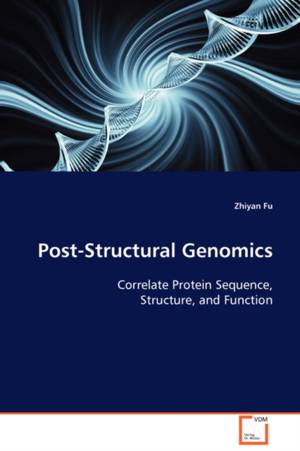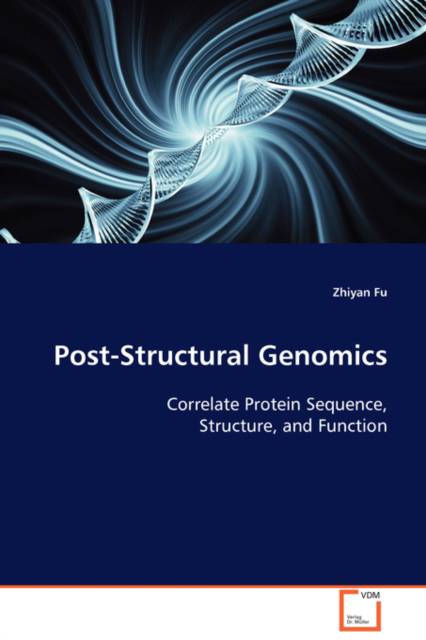
- Afhalen na 1 uur in een winkel met voorraad
- Gratis thuislevering in België vanaf € 30
- Ruim aanbod met 7 miljoen producten
- Afhalen na 1 uur in een winkel met voorraad
- Gratis thuislevering in België vanaf € 30
- Ruim aanbod met 7 miljoen producten
Zoeken
Post-Structural Genomics
Correlate Protein Sequence, Structure, and Function
Zhiyan Fu
Paperback | Engels
€ 58,45
+ 116 punten
Omschrijving
One of the goals the post-genomic era is to use
protein sequence and structure data to learn about
the function of these proteins in normal and disease
states. In the omics era, computational methods
constitute a valuable tool, because they can easily
process large amounts of data and provide useful and
instant information relevant in biomedical research.
This book described using computational approaches to
study the effects of genetic mutations in proteins,
with the general aim of correlating protein sequence,
structure, and function. Our works focus on
identifying whether genotype/phenotype relationship
can be learned from protein sequence and structuralinformation, whether protein structure prediction
methods are accurate enough to provide useful
information when the experimental structures are not
available, and finally to combine this information to
predict and understand the effect of mutations on
clinical phenotype and drug responses. The approaches
developed in this work enable a systematic,
comprehensive, and quantitative analysis of
disease-related mutations and establish a paradigm to
study genotype/phenotype correlations.
protein sequence and structure data to learn about
the function of these proteins in normal and disease
states. In the omics era, computational methods
constitute a valuable tool, because they can easily
process large amounts of data and provide useful and
instant information relevant in biomedical research.
This book described using computational approaches to
study the effects of genetic mutations in proteins,
with the general aim of correlating protein sequence,
structure, and function. Our works focus on
identifying whether genotype/phenotype relationship
can be learned from protein sequence and structuralinformation, whether protein structure prediction
methods are accurate enough to provide useful
information when the experimental structures are not
available, and finally to combine this information to
predict and understand the effect of mutations on
clinical phenotype and drug responses. The approaches
developed in this work enable a systematic,
comprehensive, and quantitative analysis of
disease-related mutations and establish a paradigm to
study genotype/phenotype correlations.
Specificaties
Betrokkenen
- Auteur(s):
- Uitgeverij:
Inhoud
- Aantal bladzijden:
- 132
- Taal:
- Engels
Eigenschappen
- Productcode (EAN):
- 9783639113167
- Verschijningsdatum:
- 18/12/2008
- Uitvoering:
- Paperback
- Formaat:
- Trade paperback (VS)
- Afmetingen:
- 152 mm x 229 mm
- Gewicht:
- 185 g

Alleen bij Standaard Boekhandel
+ 116 punten op je klantenkaart van Standaard Boekhandel
Beoordelingen
We publiceren alleen reviews die voldoen aan de voorwaarden voor reviews. Bekijk onze voorwaarden voor reviews.











